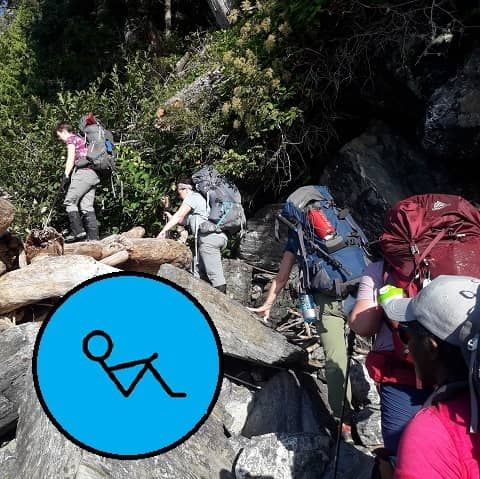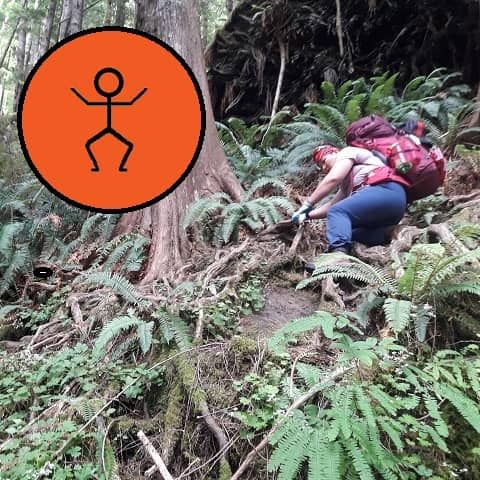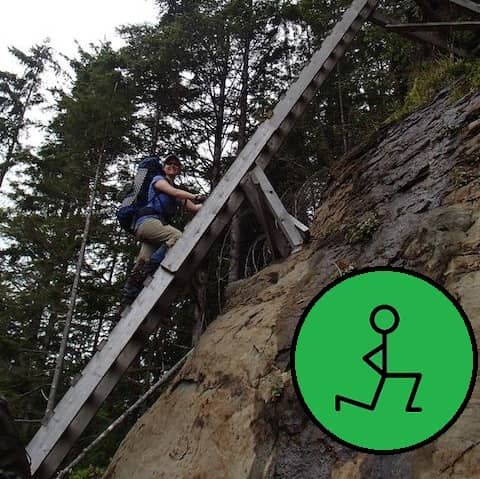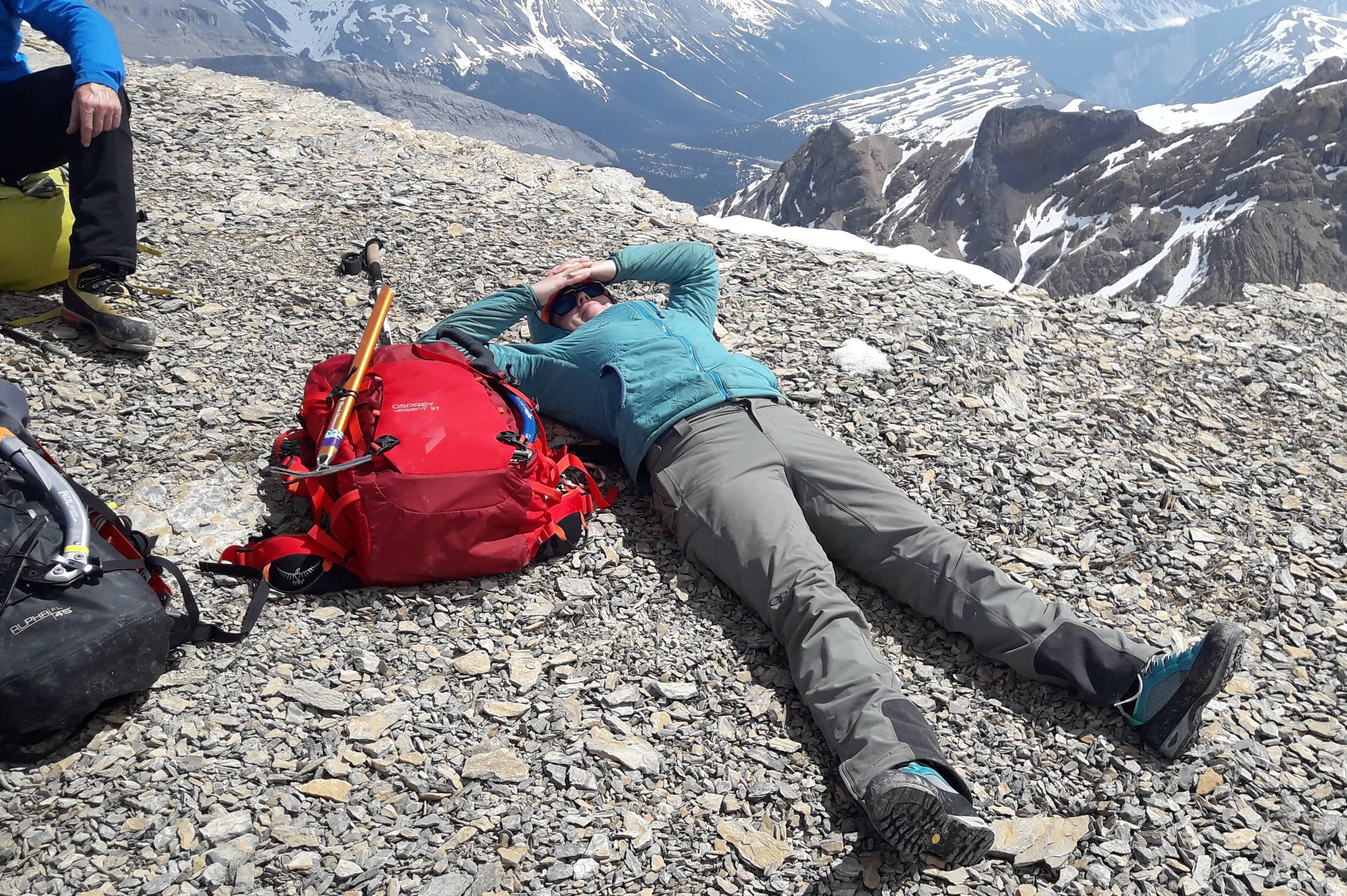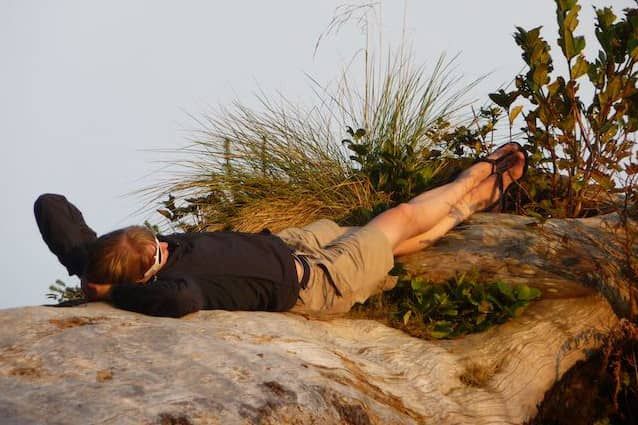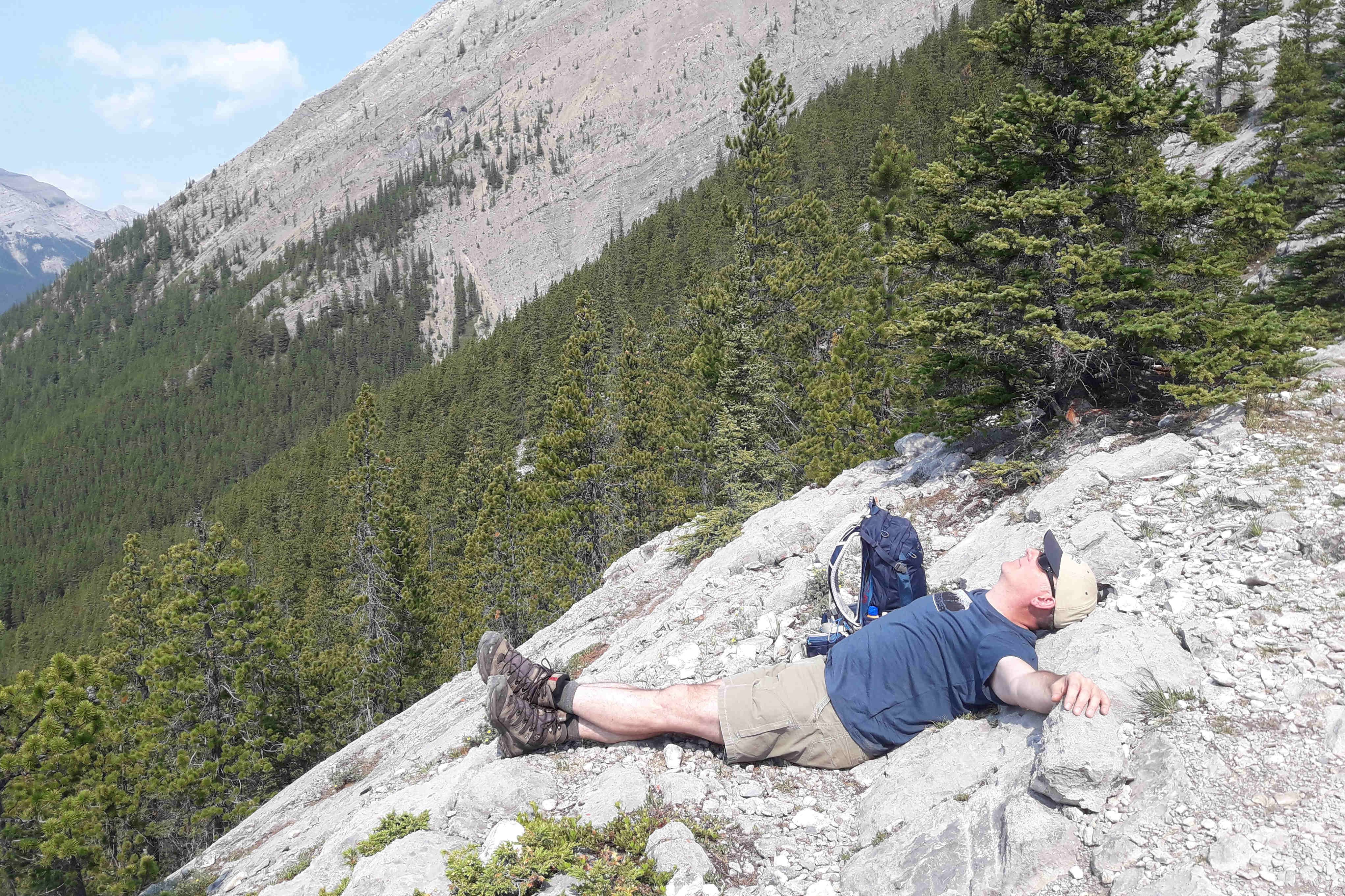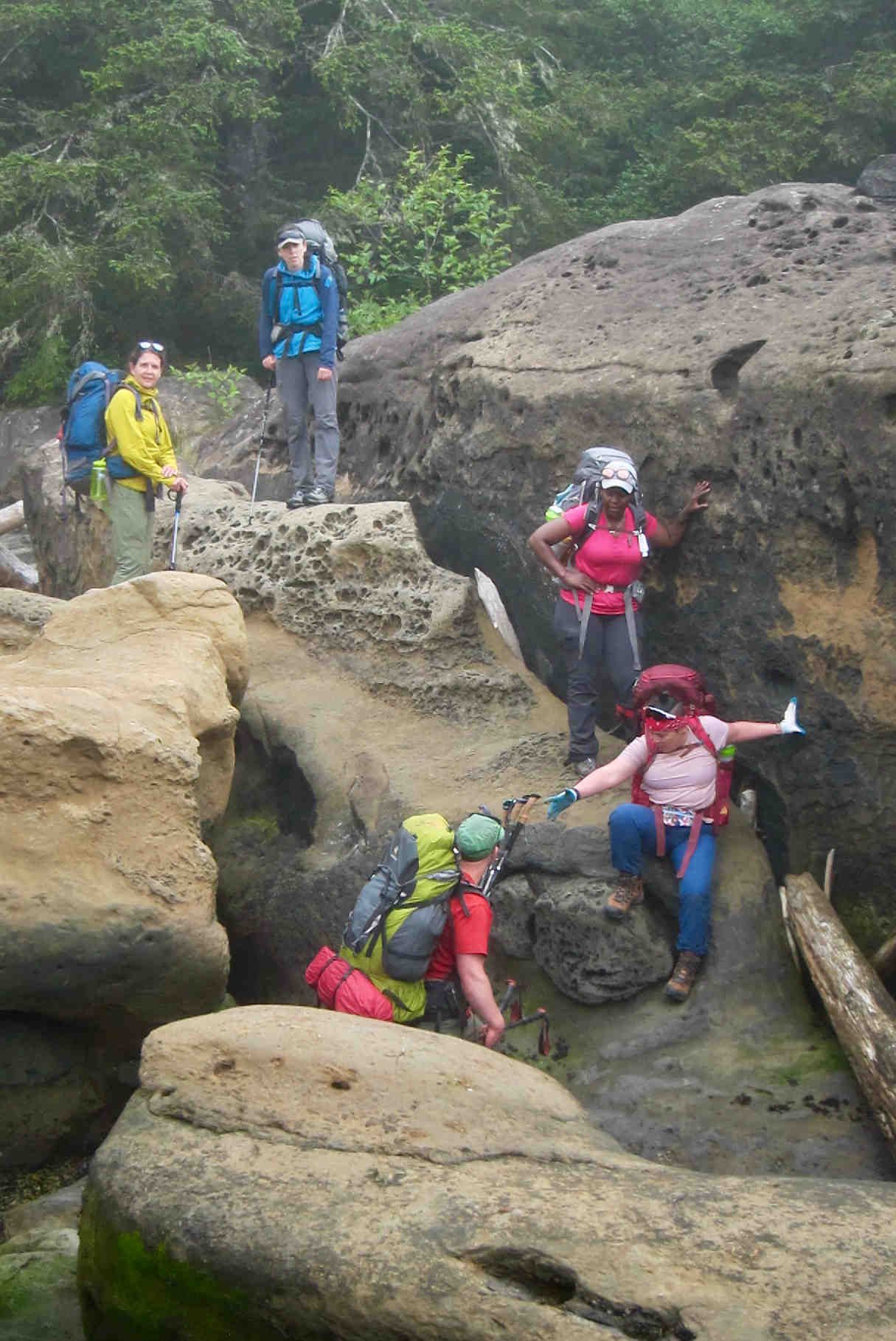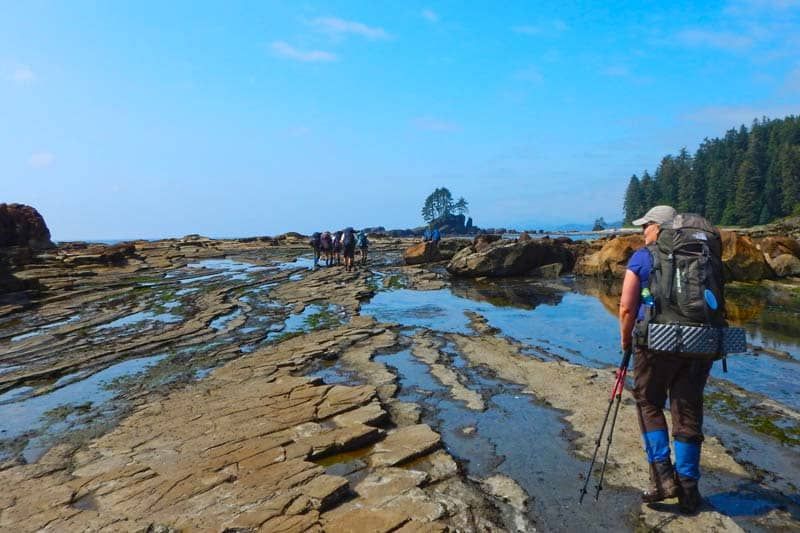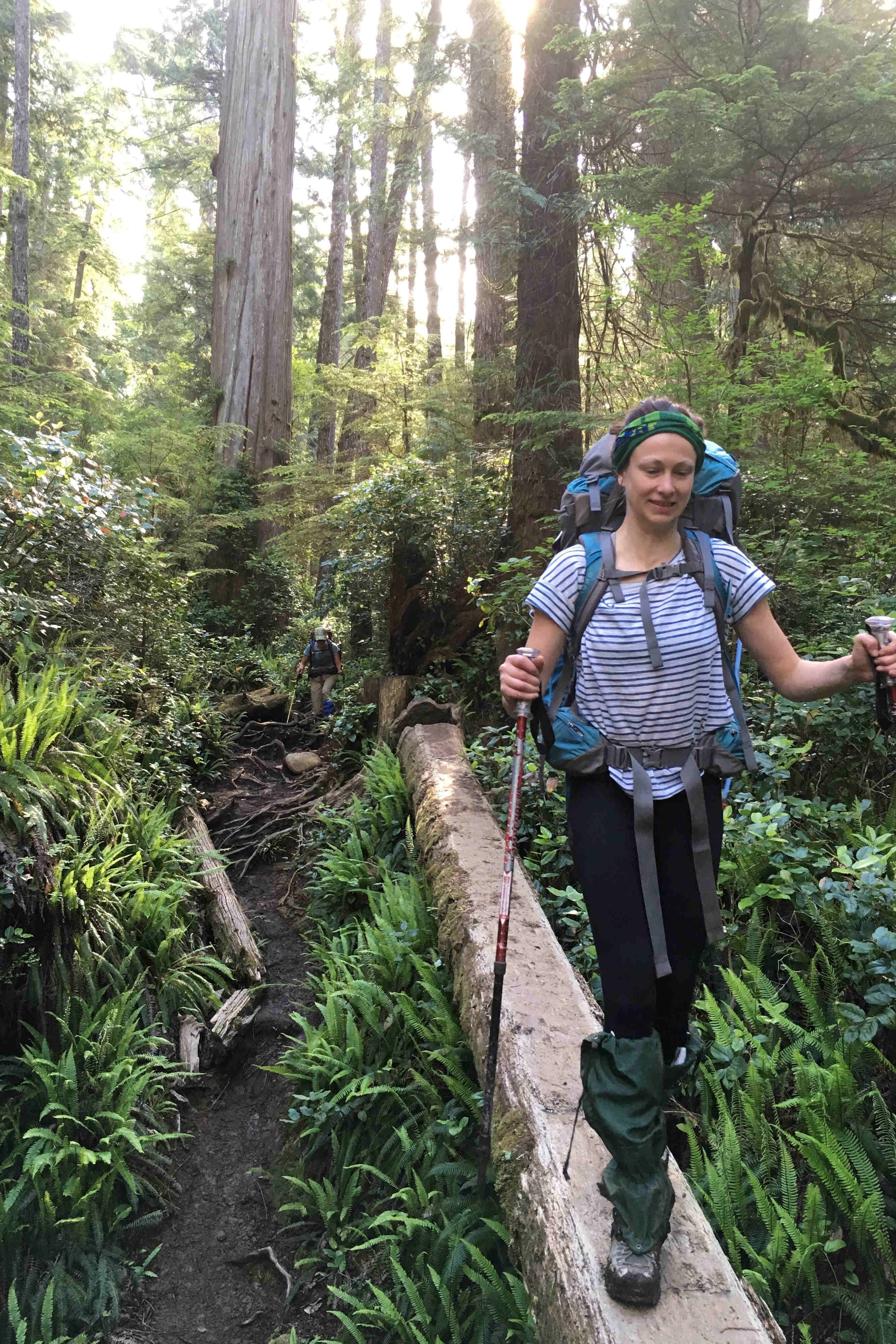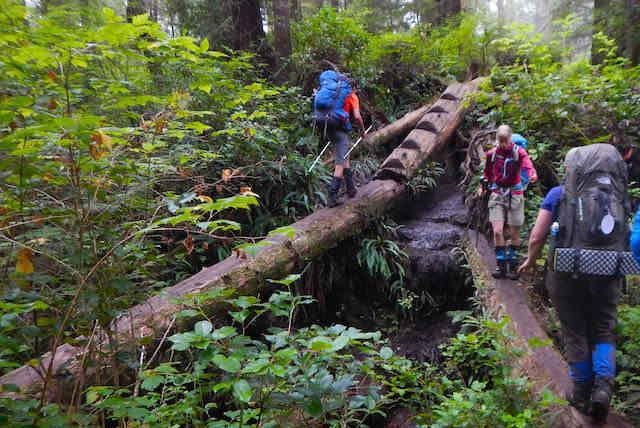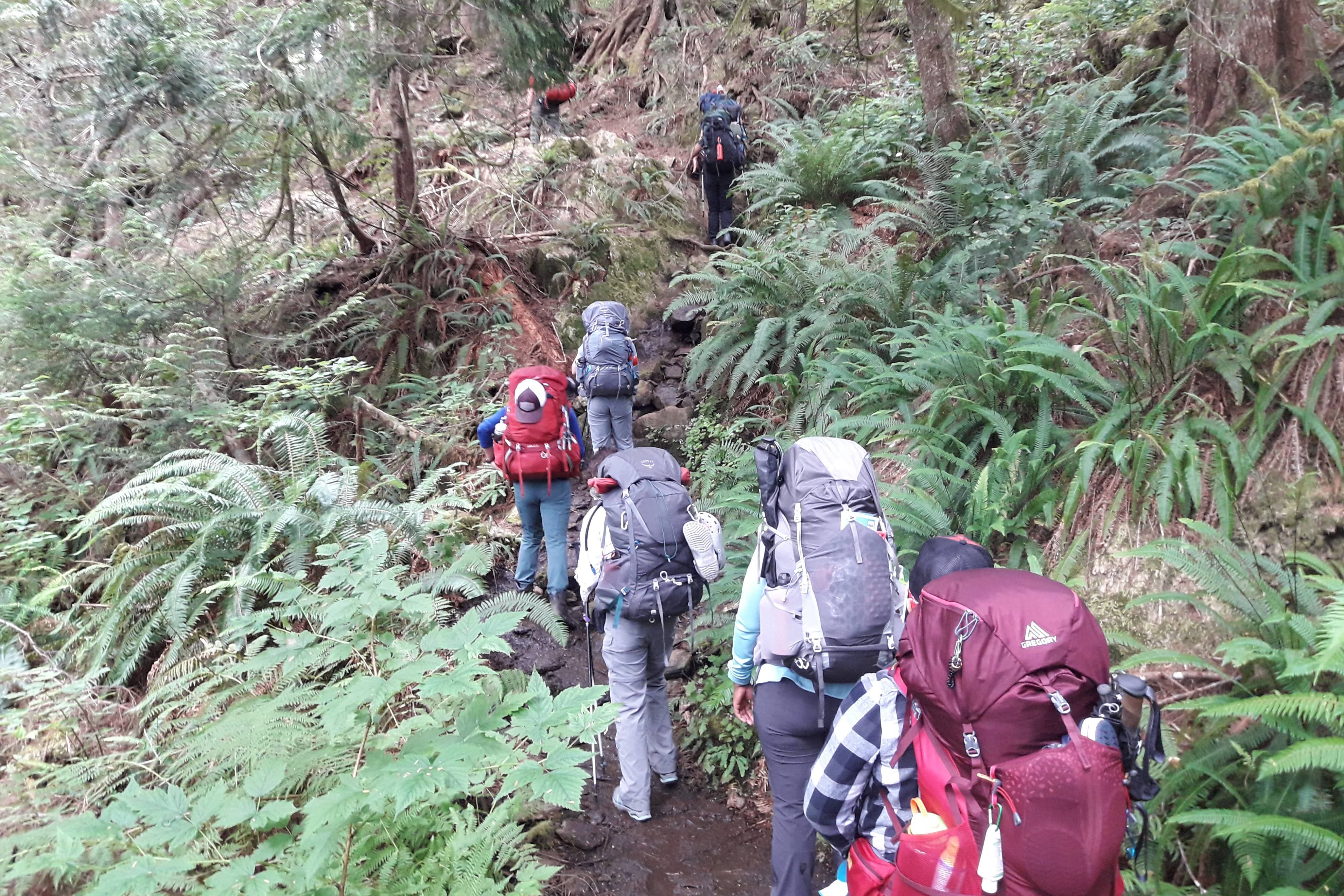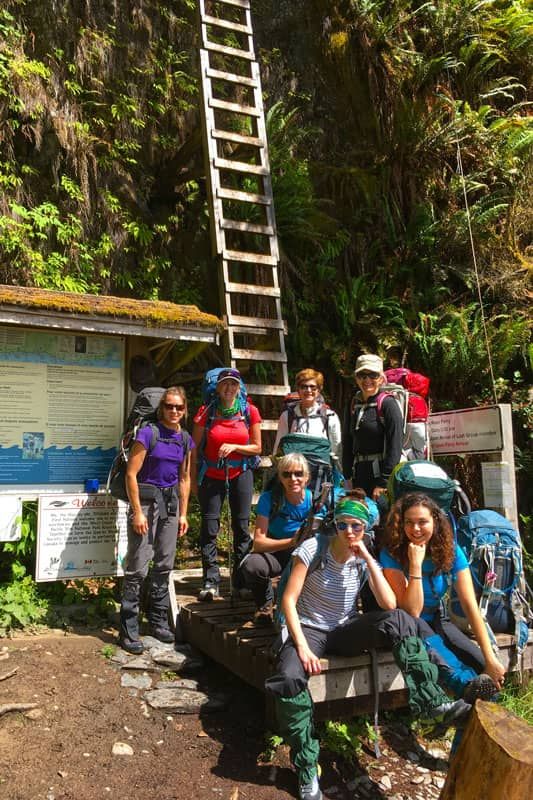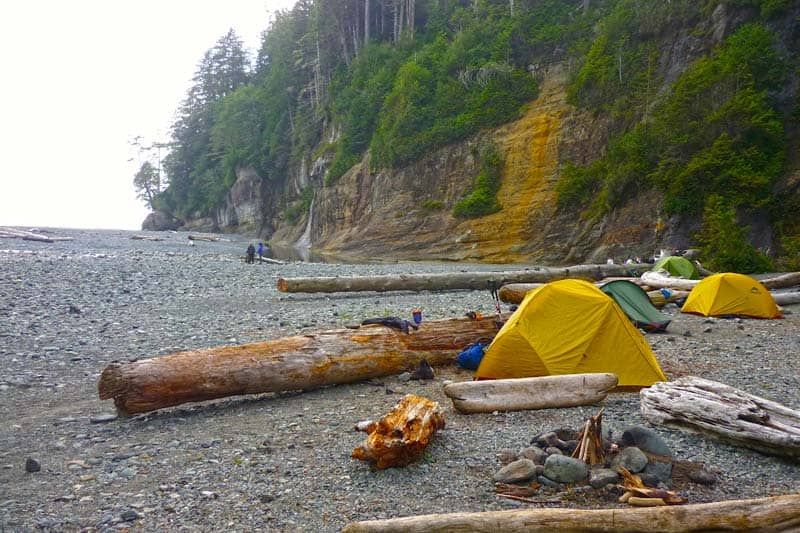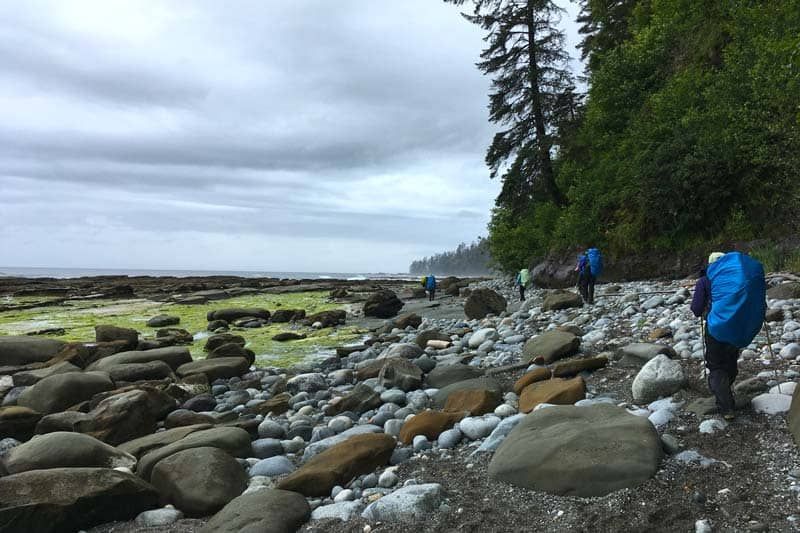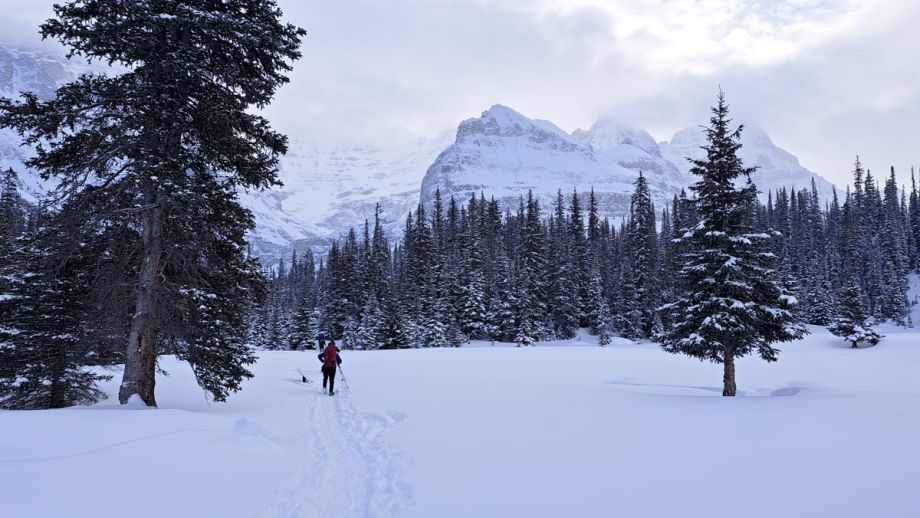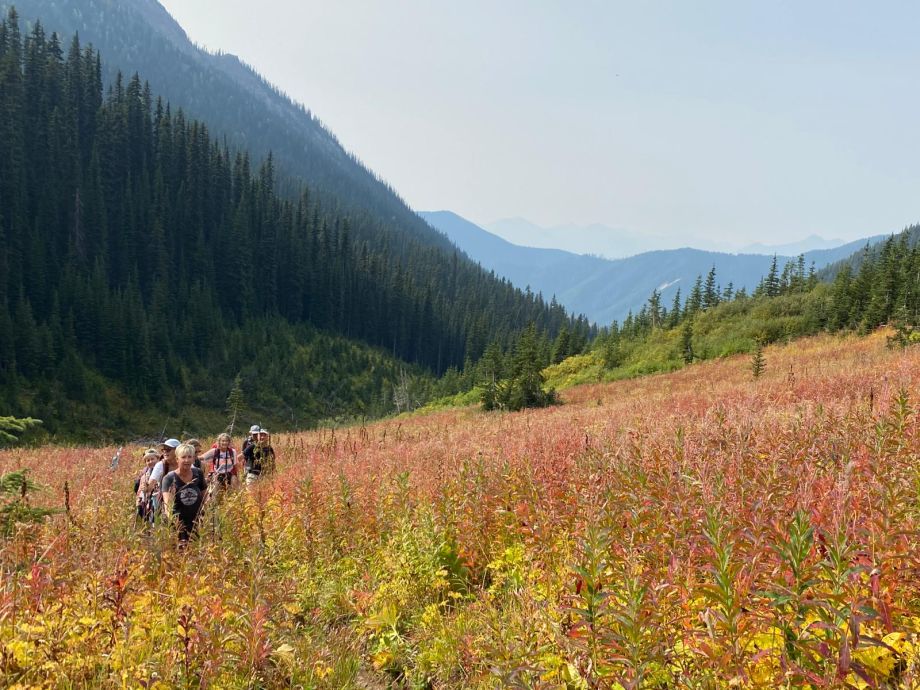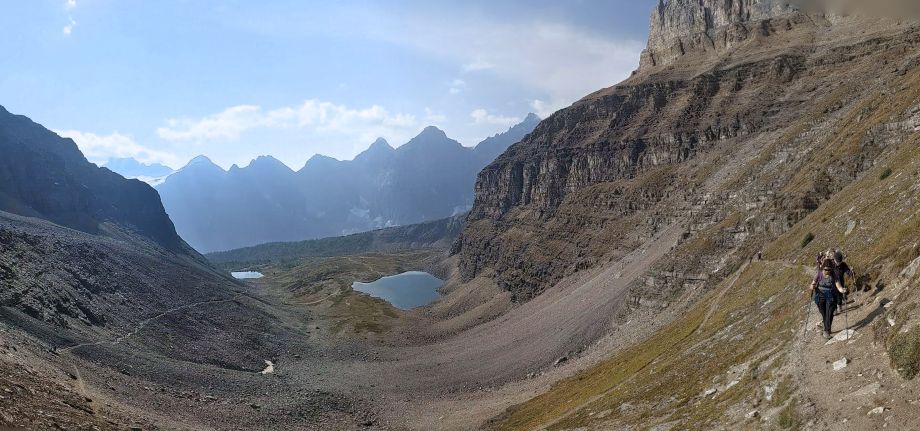Training for Backpacking
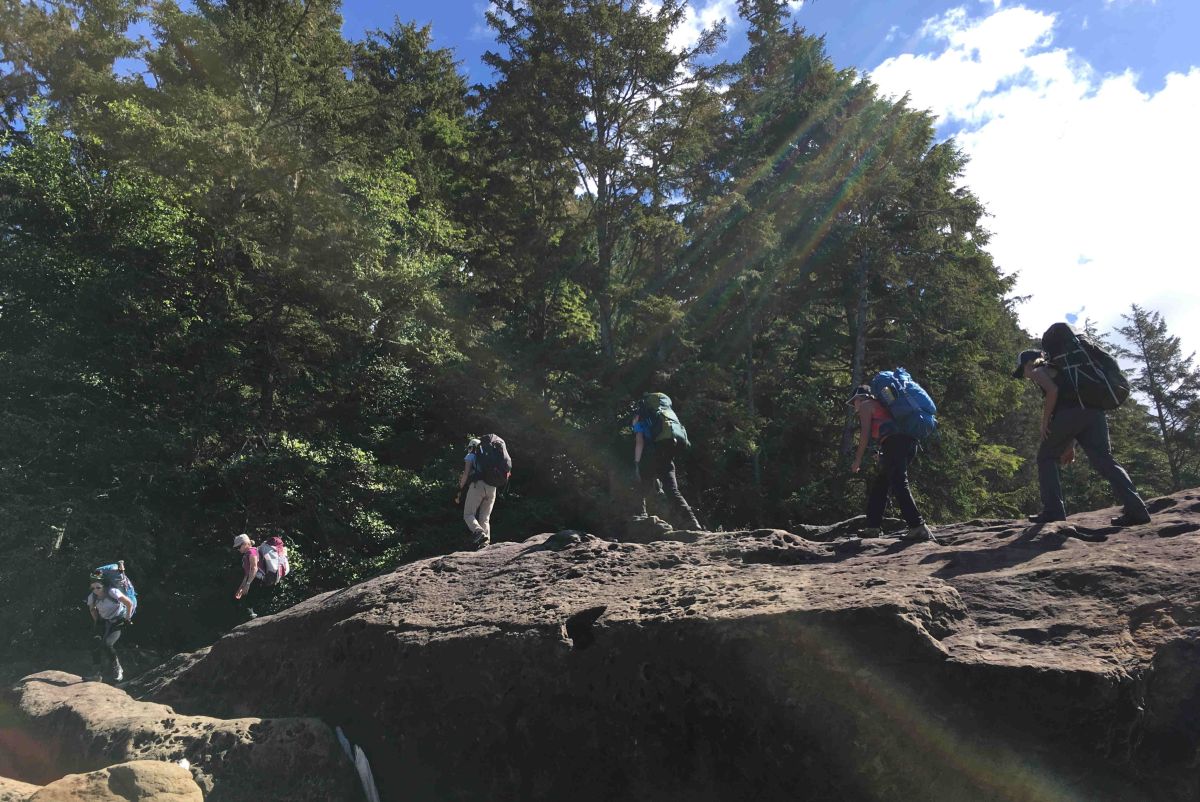
So you’re thinking about taking on the challenge of a big hike like the West Coast Trail, maybe even signed up for it. Yahoo! But then, you start to wonder if you are capable of doing it. Don’t worry, you can do it!
Get Outside has helped many people of varying body types, ages, fitness levels, and experience complete some impressive hikes. The absolute best part is that training for hiking can, and should, actually be a ton of fun.
"Training for hiking can, and should, actually be a ton of fun"
Small Steps
A big multi-day trip can be intimidating, but working up to it with a progressive series of smaller adventures makes it achievable.
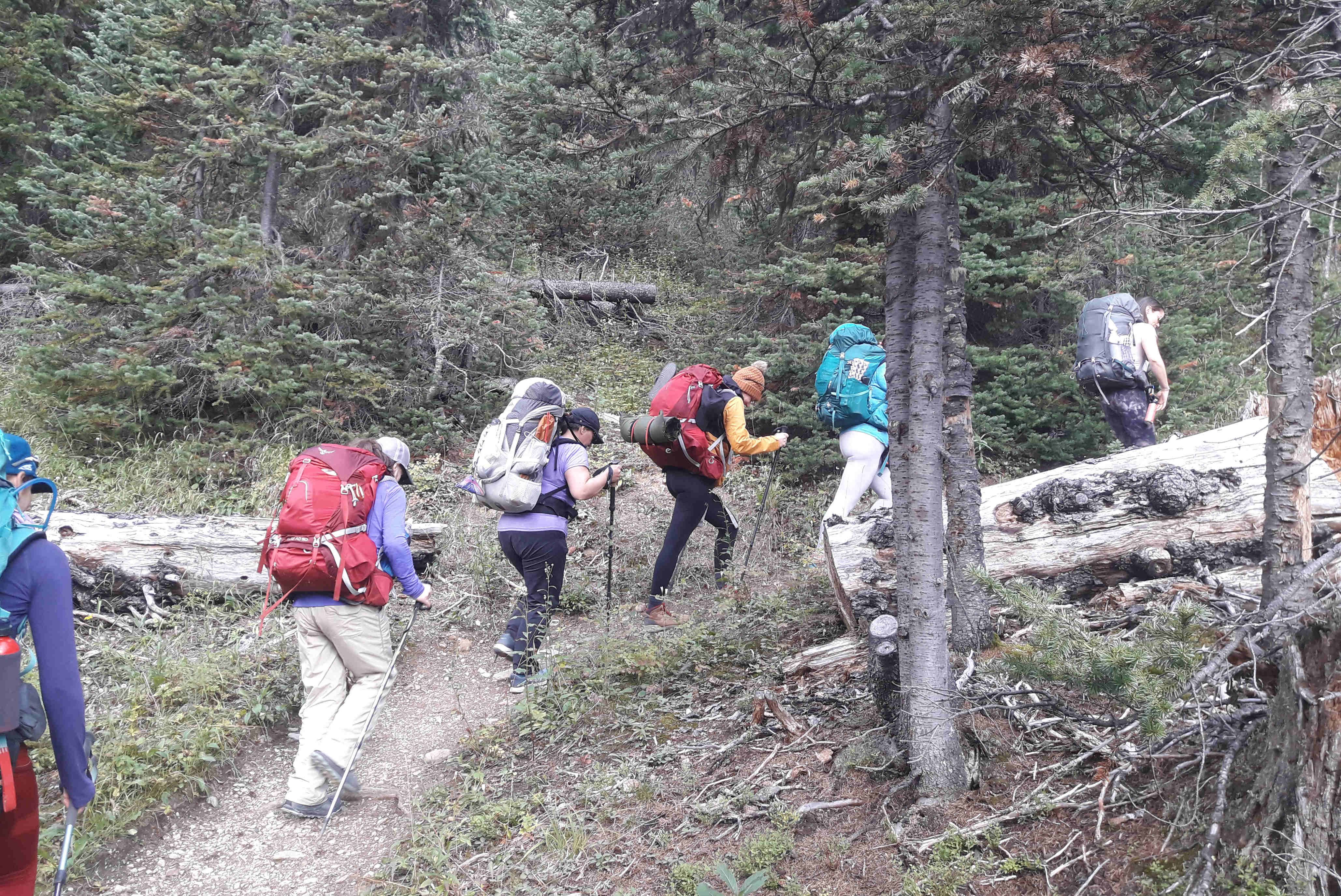
Get Outside Womens Intro Backpacking Trees
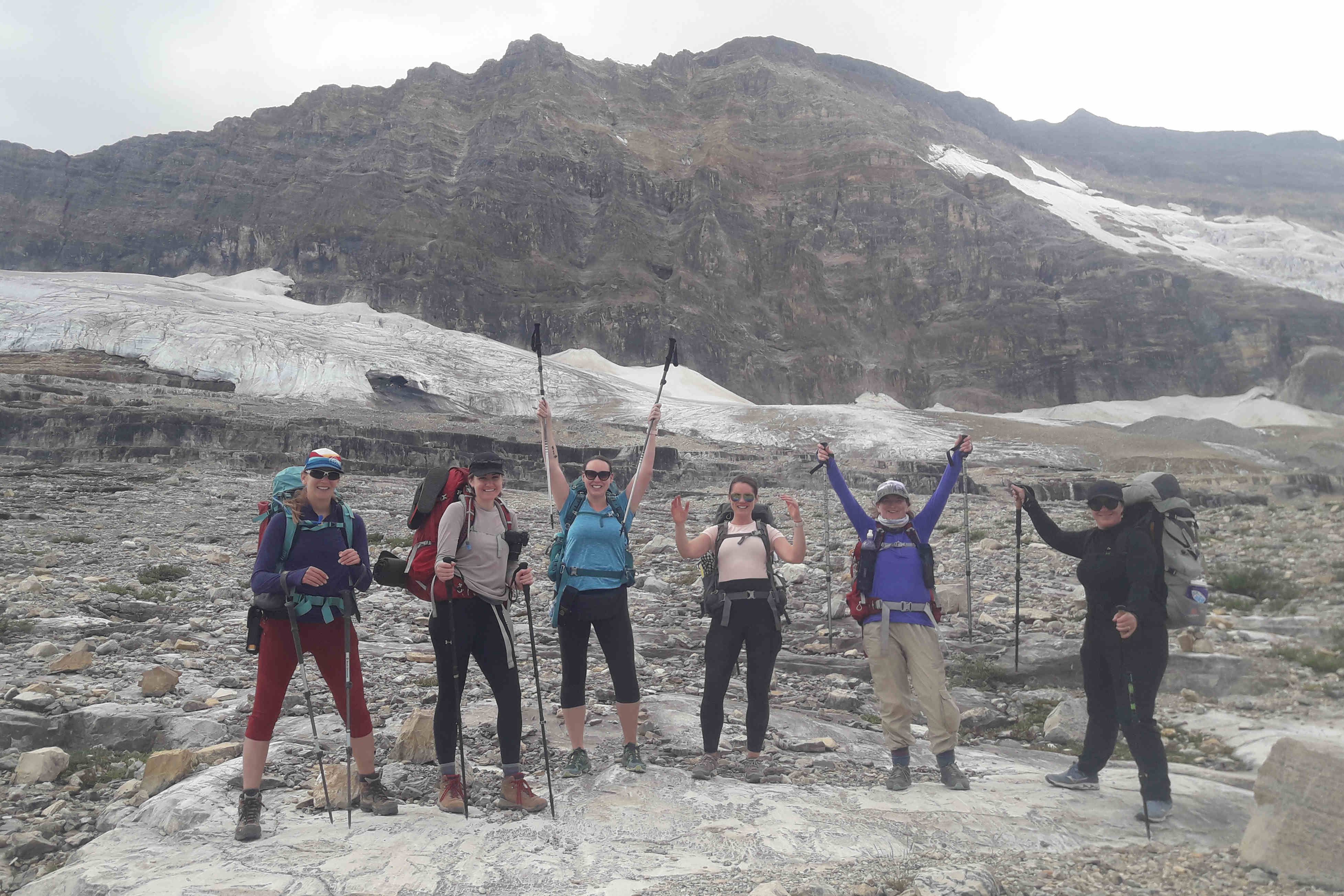
Get Outside Iceline Trail Glaciers Women Backpacking Alpine
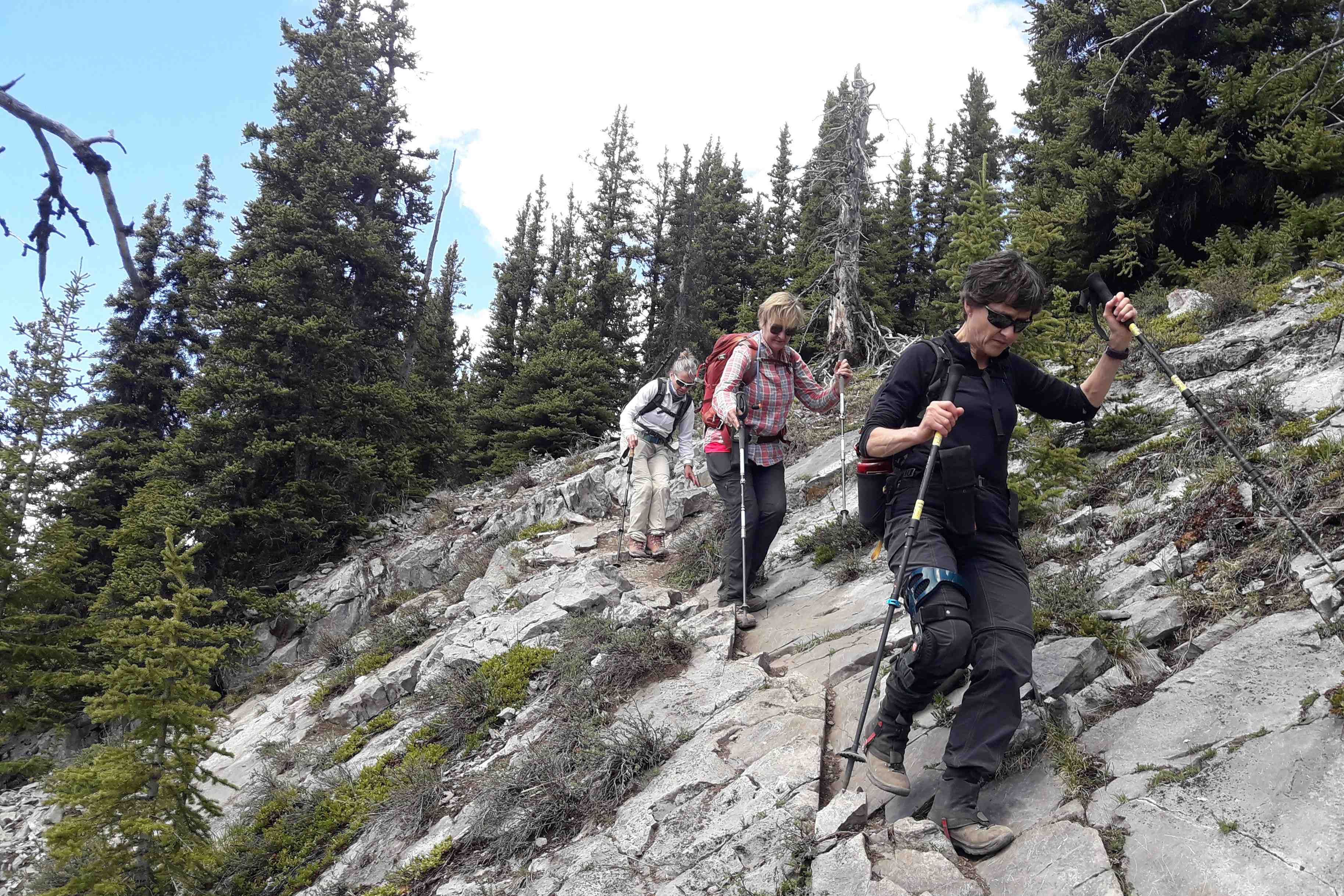
Get Outside Hiker Triple Crown Women Hiking Backpack
Begin with summer or winter daytrips, like the ones in the hiking or snowshoe fitness series. The trick is to gradually increase your effort for each week by 10-20%, so the increase is manageable. Also be sure to work in a few rest weeks (Decrease training load by 30%) where you take it easy on a shorter stroll (the weather or life in general may decide this one for you!).
Once you’re comfortable with day hikes, tackle a bigger backpack with an overnight trip. Start off with single overnights that are 10km or less, like the women’s intro to winter camping or the women’s intro to backpacking, and work your way up to longer trips like the Iceline or Rockwall.
You may not notice the steady improvement in your physical abilities right away. But, over a few months the results of consistent effort will show themselves! The same thing happens with other hiking skills like setting up and taking down your tent, figuring out how to stay warm in your sleeping bag at night, and what food & clothing works best for you. The more you do it, the easier it gets.
Don't Forget Strength Training
Strength training is often overlooked by outdoor enthusiasts. We tend to train by doing, but those who “skip leg day” are missing out!
Try a progressive training program that is geared towards hiking, like this one.
What do all those exercises get you? Strength training is often overlooked by outdoor enthusiasts. We tend to like to train by doing, but those who “skip leg day” are missing out! Try a progressive training program that is geared towards hiking, like this one. What do all those exercises get you? Here are the most common features encountered on a backpacking trip like the West Coast Trail, and why those exercises help.
-
Ladders
Lunges and squats make our legs powerful, which propel us up and down the ladders. Squats build the muscles we need to go up, and reverse lunges make going down ladders feel much more secure.
-
Boulders
Situps and planks strengthen our core, which connects our upper body to our lower body. This is important when you navigate tricky moves over boulders with big packs.
-
Uneven/Slippery GroundDynamic movements like hopping and jumping jacks train our bodies to maintain balance and control while in motion. These movements also reinforce the connection between our brains and our feet (proprioception), leading to better balance and less tripping.
Training with a backpack helps our bodies adjust to a new center of gravity, and get used to carrying weight. Training weight should max out at about 25lbs, even if you are planning to carry a lot more while on the trail. Any higher weight, and you’ll just be breaking down your body, rather than building it up. Like marathon runners train for their big event by running shorter distances, hikers train with smaller loads. If you aren’t sure how much is an appropriate weight to train with, err on the side of less weight, and build up.
When training on hills, use water bottles to put weight in your backpack. This allows you to carry the weight up your training hill, working your lungs and legs on the way up. On the way down, ditch some or most of the weight to save your knees. Carrying heavy weights downhill can put a lot of unnecessary load on our body, so going down with less weight (especially if you are new to training) can help us maintain better fitness.
Listen to Your Body
If you are feeling run down or tired from your workouts, this is your body telling you that your overall load is too high. Training doesn’t happen in isolation, we all have the rest of life to worry about too.
Don’t skip workouts entirely. Instead, respect where your body is at, reduce the overall output according to how you are feeling, or delay by a day. If you are dreading the big hike you had planned for the weekend and want to sleep, sleep in a few extra hours and go for a shorter walk in a nearby park instead. If your thighs are still sore more than two days after your last workout, spend more time warming up. If after 10 minutes into your workout you still feel fatigued and run down, perform fewer reps or use less load.
Workouts should be fun and challenging, but running yourself into the ground isn’t going to help you get fit!
"Spend more time warming up"
Mileage Matters
The more hiking miles you can get done, the more comfortable you are going to be when hiking longer distances and with bigger loads. The great news is that it does not have to suck, and can even be fun! Our bodies get a huge benefit from long duration (2+ hours), low intensity exercise. Luckily, this is the most enjoyable exertion level! Hike at a pace at which you can speak a whole sentence without gasping for air. Or, for those who are more introverted, you should be able to breathe through your nose.
If you find yourself really tired and sore after an activity, a recovery activity might be the best thing to do. A recovery activity involves the same kinds of motions, but at a much lower intensity. Getting our body moving, but not taxing it, can help blood flow to affected areas, helping recovery. A body at rest has poorer circulation and a decreased ability to heal
Massages are great for recovery days, or you can become good friends with a stretching program.
Training for that big hike can be fun, rewarding, and take away a lot of worry about whether you can do that big hike. Training also doesn’t have to be perfect to be helpful, do what you can, when you can, and balance with the rest of life. Get after it!
Other Posts of Interest
Fresh off the Press
Most Popular Stories
Tags
Spread the Love - Share this article on your socials...
